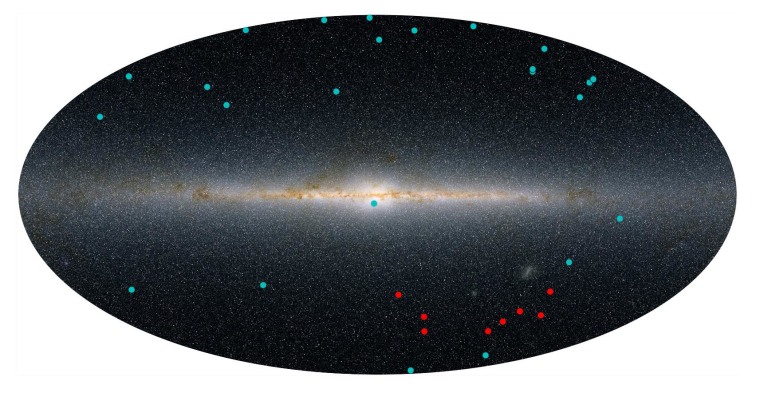Two groups of astronomers looking around the edges of our Milky Way galaxy were surprised to find a gaggle of previously undetected dwarf satellite galaxies — incredibly dim conglomerations of stars that may account for some of the mysterious dark matter in our cosmic neighborhood.
Nine galaxy candidates were discovered in a region of the southern celestial hemisphere near the best-known dwarf galaxies orbiting the Milky Way: the Large and the Small Magellanic Cloud. The closest is about 95,000 light-years away. The farthest is more than a million light-years distant.
A team of astronomers from the University of Cambridge and a separate group representing the Dark Energy Survey, headquartered at Fermilab, announced the discoveries jointly on Tuesday.

"The discovery of so many satellites in such a small area of the sky was completely unexpected," Cambridge's Sergey Koposov, the lead author of a study to be published in The Astrophysical Journal, said in a news release.
Both teams based their findings on publicly available data from the Dark Energy Survey, which is collecting imagery of the southern sky to seek insights into the cause of our universe's accelerating expansion.
The findings could shed light on a different mystery: Astronomers say dark matter apparently accounts for roughly 80 percent of the universe's mass, but the stuff can't be observed except through its gravitational effect. The newly discovered dwarf galaxies could be reservoirs for dark matter.
“The large dark matter content of Milky Way satellite galaxies makes this a significant result for both astronomy and physics,” Fermilab's Alex Drlica-Wagner, one of the leaders of the Dark Energy Survey's study, said in a news release.
The Cambridge astronomers said at least three of the nine newly detected objects are definitely dwarf galaxies. They said the other six could be galaxies, or they could be globular clusters that aren't held together with dark matter. The Dark Energy Survey group identified eight new Milky Way companions and said several are likely to be new satellite galaxies.
IN-DEPTH
- Dark Matter Hunters Suspect They've Found 'Galaxy X'
- More Dwarf Galaxies May Swarm Milky Way
- Giant Black Hole Discovered in Dwarf Galaxy